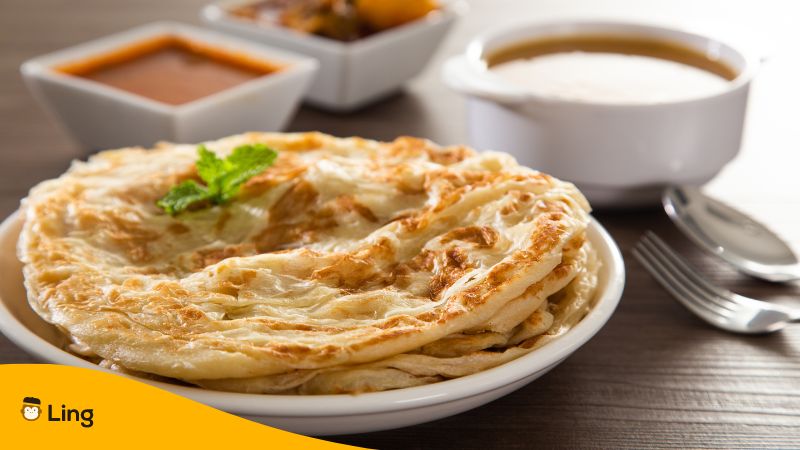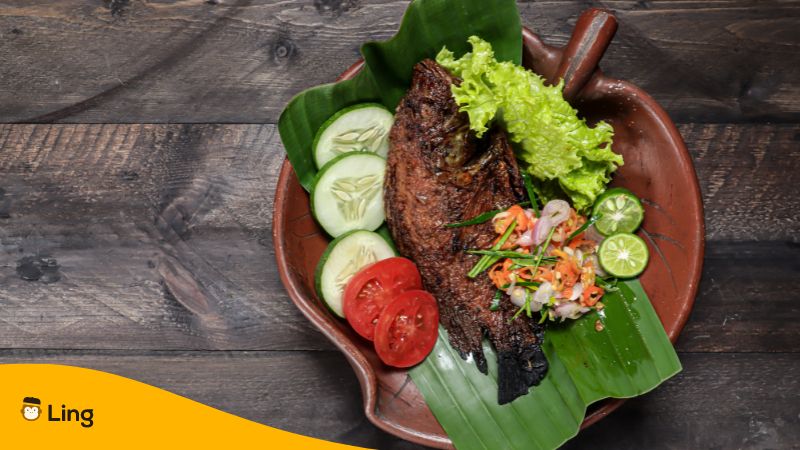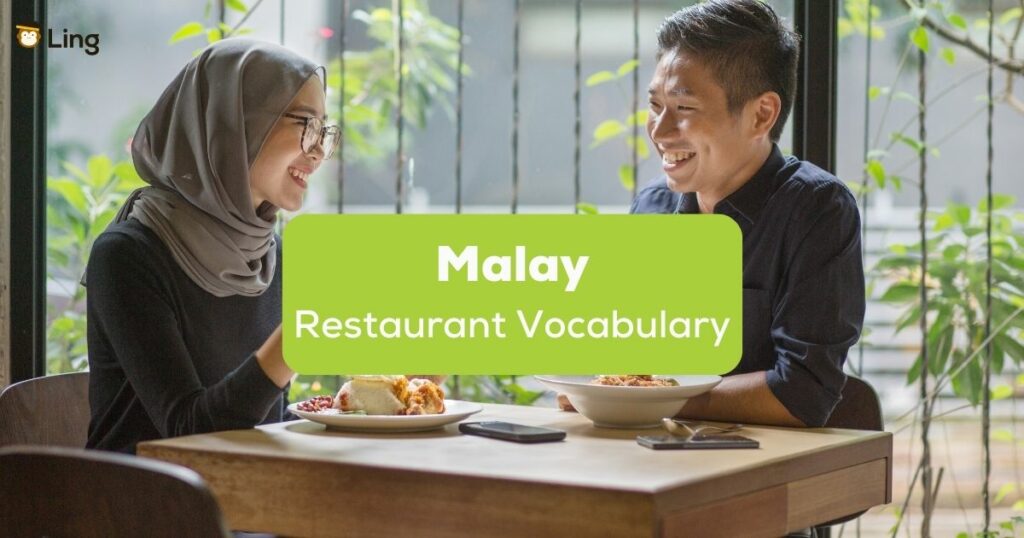Traveling on an empty stomach is a bad idea. Thus, local Malaysian restaurants (or “restoran” in Malay) should be on your list of priorities when you are planning a trip to Malayasia. Particularly, it’s just as important to start a conversation with the people you’re visiting as it is to find good food. So, it’s a good idea to familiarize yourself with Malay vocabulary for the restaurant before you arrive.
In order to avoid ordering the wrong meal due to misunderstandings, this blog’s lesson on how to order food in Malay will be quite beneficial to you. Here are some additional choices for Kuala Lumpur eateries that you may try before we take you out to practice your Malay.
Best Restaurants In Kuala Lumpur
Let’s take a look at some of the most popular restaurants, touted the best, in Kuala Lumpur.
Ikan Bakar Bellamy
The best food can be found in this area’s food carts and restaurants. Ikan Bakar, on the other hand, only refers to grilled fish. So, now you know what must be eaten, don’t you? Grilled fish with an Eastern Malay-style curry rub over it. You can eat something spicy and sweet at the same time.
Heun Kee Claypot Chicken Rice Restaurant
A classic Chinese-Malay clay pot chicken rice dish cooked over charcoal in the traditional style. To complete your meal, try their Chinese herbal soup and then a couple of fried vegetables. While you’ll have to wait for the chefs to cook each bowl individually, this shows diners that they’re genuinely beginning each pot from the start.

Mansion Tea Stall
Breakfast, roti canai, and sweet tea are all available here. One of Kuala Lumpur’s favorite breakfast options is roti canai, which is both quick, convenient, and delicious. However, when it comes to sugar intake, you must be careful if you consume too much.
Nasi Lemak Tanglin
The word “Nasi Lemak,” which translates as “fat rice,” comes from the Malay language. The rice is softened with coconut milk before being combined with pandan leaves in this dish. Cucumber, fried chicken, and salted fish are typical toppings. It’s served in a banana leaf, which adds a fascinating touch.
Restoran Mun Kee
In Southeast Asia, the fish head is a traditional cuisine. Kuala Lumpur, Malaysia, must be at the top of your list if you enjoy a classic Chinese steam fish head. However, this restaurant offers a large head of fish, as well as the back, the stomach, and the slices of the fish. It’s almost as large as an entire fish!

Tugu View Cafe
Another Malay-style fish head curry restaurant is known for its enormously excellent flavor. Only the heads of Red Snapper ocean fish, known as Ikan Merah, are available to order at this restaurant. Large pieces of brown tofu are included in the stainless steel serving bowl, and a large amount of fresh sour mango and spicy ginger for garnishing before serving the dish.
Sri Ganapathi Mess
The ethnic diversity of Malaysians is well-known; among them are Chinese-Malays, Indians-Malays, and many more. In addition to the Chinese-influenced food already described, authentic South Indian cuisine is one of the most enjoyable things to eat in Malaysia. So, if you’re in Kuala Lumpur, we strongly urge you to visit Sri Ganapathi Mess at Putra Jaya. With your fingers and a large banana leaf, you may create whatever combination of curried meats, fried veggies, or chili sauces and blend it into a mound of soft, white rice that you choose at this restaurant.
Malay Vocabulary For The Restaurant
| English | Malay |
|---|---|
| Restaurant | Restoran |
| Order | Tempah |
| Harga | Price |
| Menu | Menu |
| Delicious | Sedap |
| Spicy | Pedas |
| Food | Makanan |
| Eat | Makan |
| Add | Tambah |
| Less | Kurang |
| Rice | Nasi |
| Noodles | Mee |
| Fried noodles | Mee goreng |
| Fried rice | Nasi goreng |
| Soup | Sup |
| Curry | Kari |
| Flatbread | Roti |
| Chicken | Ayam |
| Beef | Daging |
| Egg | Telur |
| Lamb | Kambing |
| Can I order food, please? | Boleh says tempah makanan? |
| What’s the menu for today? | Apa menu untuk hair in? |
| I want to eat nasi lemak. | Saya mahu makan nasi lemak. |
| Which food is famous here? | Apa makanan popular di sini? |
| How much is the total? | Berapa jumlah? |
| How much is the price for all these foods? | Berapa harga semua makanan ini? |
| Can I please have the bill? | Boleh berikan says bil? |
Malay Vocabulary To Order Drinks At A Coffee Shop
| English | Malay |
|---|---|
| Drink (v.) | Minum |
| Beverage | Minuman |
| Coffee | Kopi |
| Tea | Teh |
| Water | Air |
| Hot | Panas |
| Cold | Sejuk |
| Iced | Ais |
| A glass | Segelas |
| Sweet | Manis |
| Sugar | Gula |
| Milk | Susu |
| I want to drink hot tea. | Saya mahu minum the panas. |
| Can I have a glass of warm water, please? | Boleh says minta segelas air suam? |
Summary
Many restaurants in Malaysia are worth visiting, but don’t forget to practice ordering meals in the local language. To avoid the headache of ordering the wrong menu and then paying for it, it’s time to brush up on your Malay so you can communicate effectively anywhere you go. It’s our aim that this blog post will provide you with some new ideas for striking up a meaningful conversation with the people working at the restaurant or cafe where you’re eating. And that will make your future trip to Malaysia much less nerve-wracking and even more confident to ask the waiter to make whatever adjustments you like.
Learn Malay With The Ling App
Let the Ling app make your journey even more enjoyable! Every step of the way, we provide you with the massive resources you need to survive in Malaysia. As long as you’ve got a good command of Malay, you’ll be able to converse easily with the locals in restaurants and hotels. Because of the Ling app’s flexibility, you can pick up a ton of vocabulary on the go. While learning words, you may jump into the chatbot and engage in a dialogue with a natural native tongue. And the most significant advantage is that the Ling app allows you to choose the pace and flow of your study.
Do you think it’s a good fit for your learning style? So download the Ling app from the Google PlayStore and Apple AppStore now, and prepare to be fluent in Bahasa Malaysia very soon!



































































